Review: SITI Company and Ann Hamilton set sail for Virginia Woolf’s ‘To the Lighthouse’
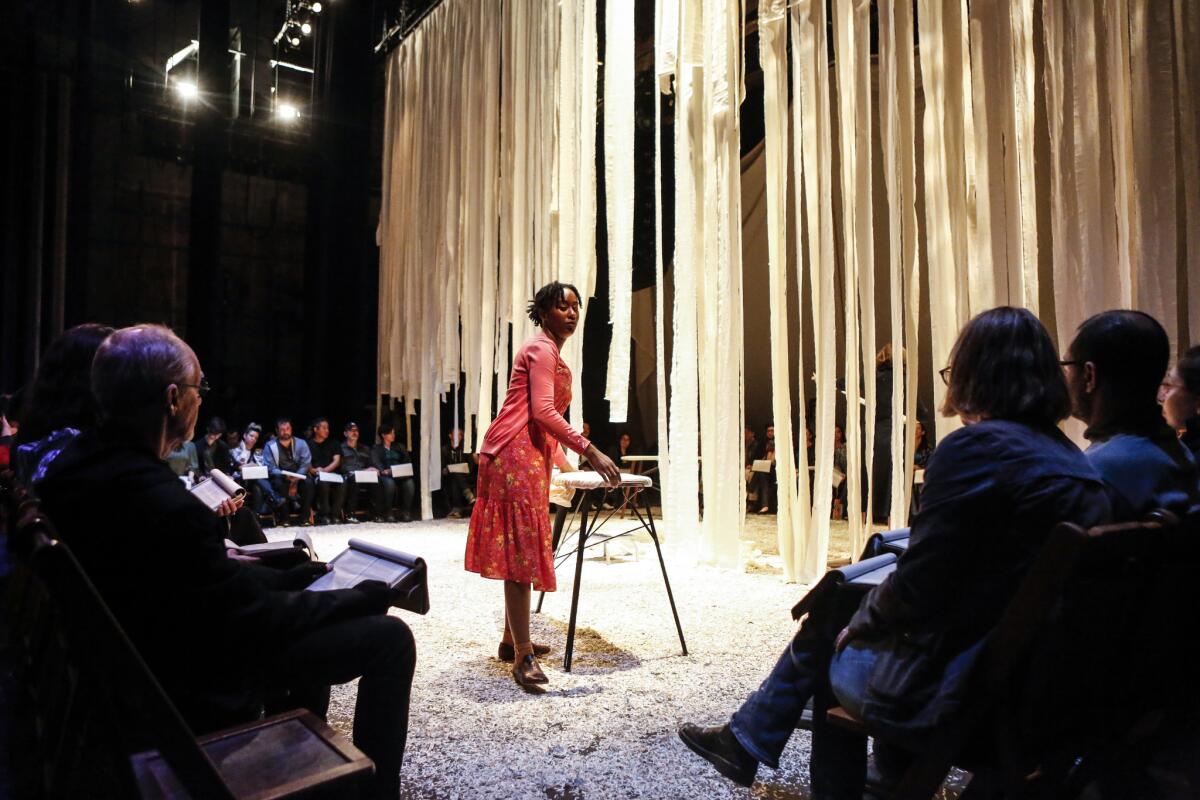
- Share via
The solitary act of reading becomes a shared activity in “The Theater Is a Blank Page,” a graceful collaboration between visual artist Ann Hamilton and SITI Company, director Anne Bogart’s avant-garde troupe.
At the center of this immersive performance installation, an interdisciplinary offering presented by UCLA’s Center for the Art of Performance, is Virginia Woolf’s “To the Lighthouse.” Theatergoers, divided into small groups (attendance is limited to 90 people overall) are guided to different parts of Royce Hall, where Woolf’s 1927 novel, one of the glories of literary modernism, is summoned in a theatrical séance.
Hamilton constructs different spaces through the scenic manipulation of simple materials such as white fabric, brooms and shredded paper. Brian H. Scott’s hypnotic lighting, inspired by the book’s island setting, creates effects that merge sea and sky. Darron L. West’s soundscape complements the Neptune-like environment with an ocean of strange sounds and sweet melodies.
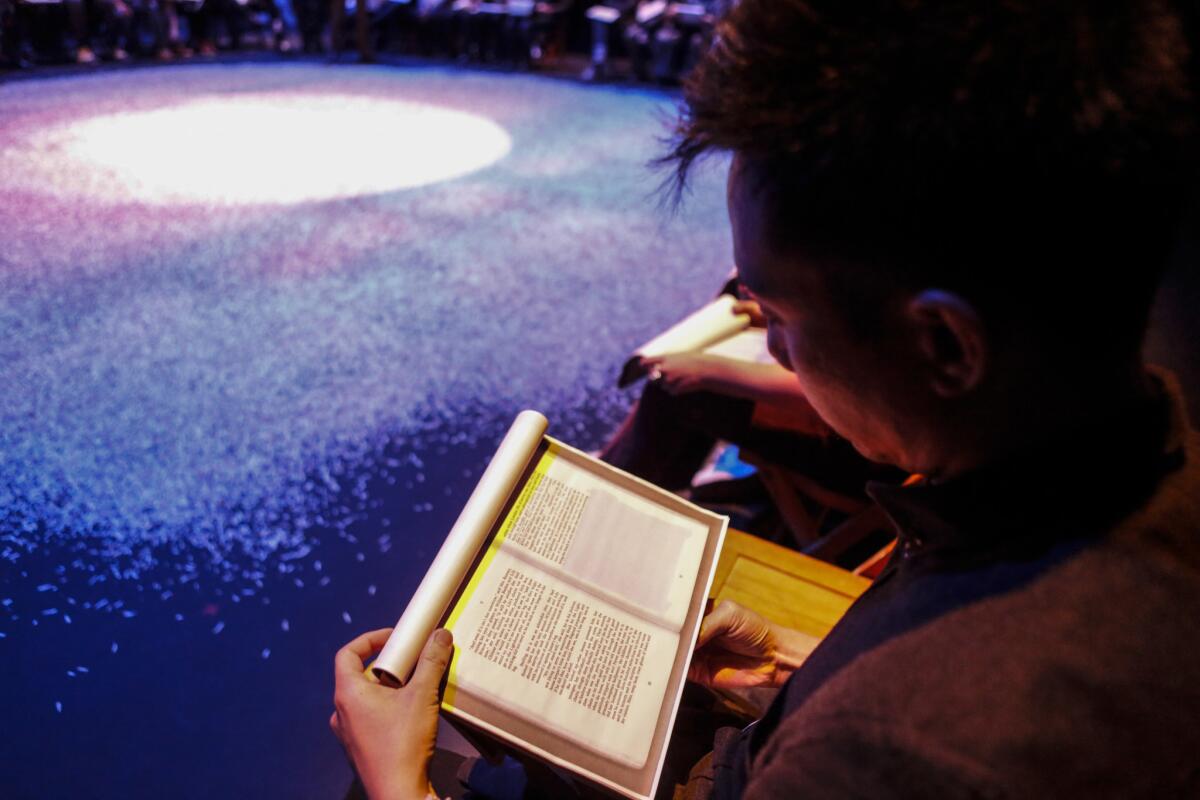
Bogart, who co-directed with Hamilton, orchestrates these scenes with her usual geometric care. But the spirit of the production is relaxed and communal. At the start of the piece, we watch from the topmost seats in the mezzanine (most of the rows are covered in sheets) as ensemble members slowly prepare the stage.
We are witnesses, in effect, to the act of creation, a central theme of “To the Lighthouse.” The relationship of chaos, the reality we inhabit, to form, the imposition of order and meaning through creative vision, is explored in the book through the minds of the characters — artists and intellectuals and those who love them — gathered at Mr. and Mrs. Ramsay’s vacation home in the Hebrides.
Theatrical performance, a more ephemeral art than literature, crystalizes Woolf’s idea that the nobility of artistic expression doesn’t lie in its enduring revelation. (“The very stone one kicks with one’s book will outlast Shakespeare,” thinks Mr. Ramsay, the philosopher husband and father perennially troubled by the impermanence of his intellectual achievements.)
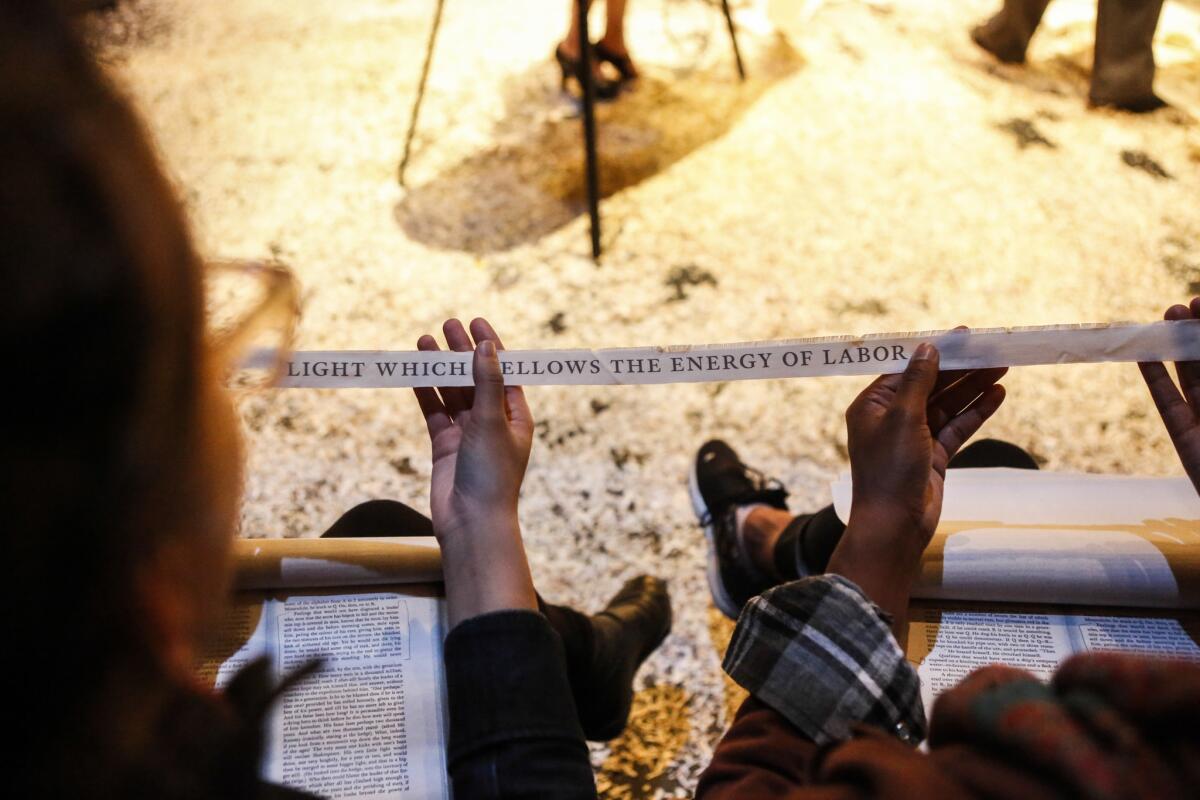
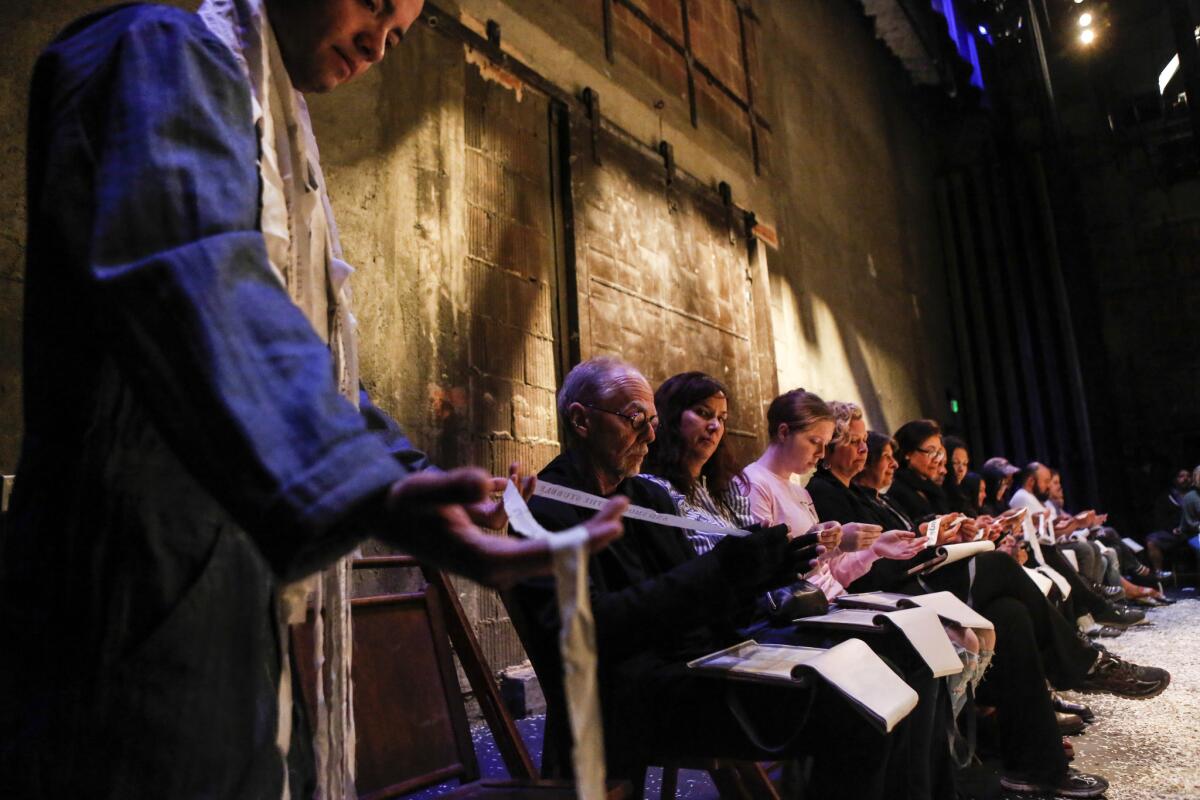
The most human beings can hope for, as Lily Briscoe, the unmarried painter who’s working on an abstract portrait of Mrs. Ramsay reading a story to her 6-year-old son, “are the little daily miracles, illuminations, matches struck unexpectedly in the dark.” Created and performed by SITI Company, “The Theater Is a Blank Page” explores the way perception, refined by the artistic process, can resonate collectively in a field in which individuals are invited to examine anew the beauty and bafflement around them.
Onlookers at first, audience members become participants as they make their passage from the nosebleed seats to the stage itself. Different tasks are assigned to us, nothing at all taxing or anxiety-inducing, just a little bit of choral reading, scenic assistance and trooping about.
Woolf’s language is a provocation to group meditation. The words of her book are intoned, projected, slipped into our hands on streams of ribbon. A reader sitting at a desk with a low lamp intones sections of the novel that are fed to her on a wheel; the ribbon of text passes through her hands like the web of threads Penelope weaves and unweaves in “The Odyssey.”
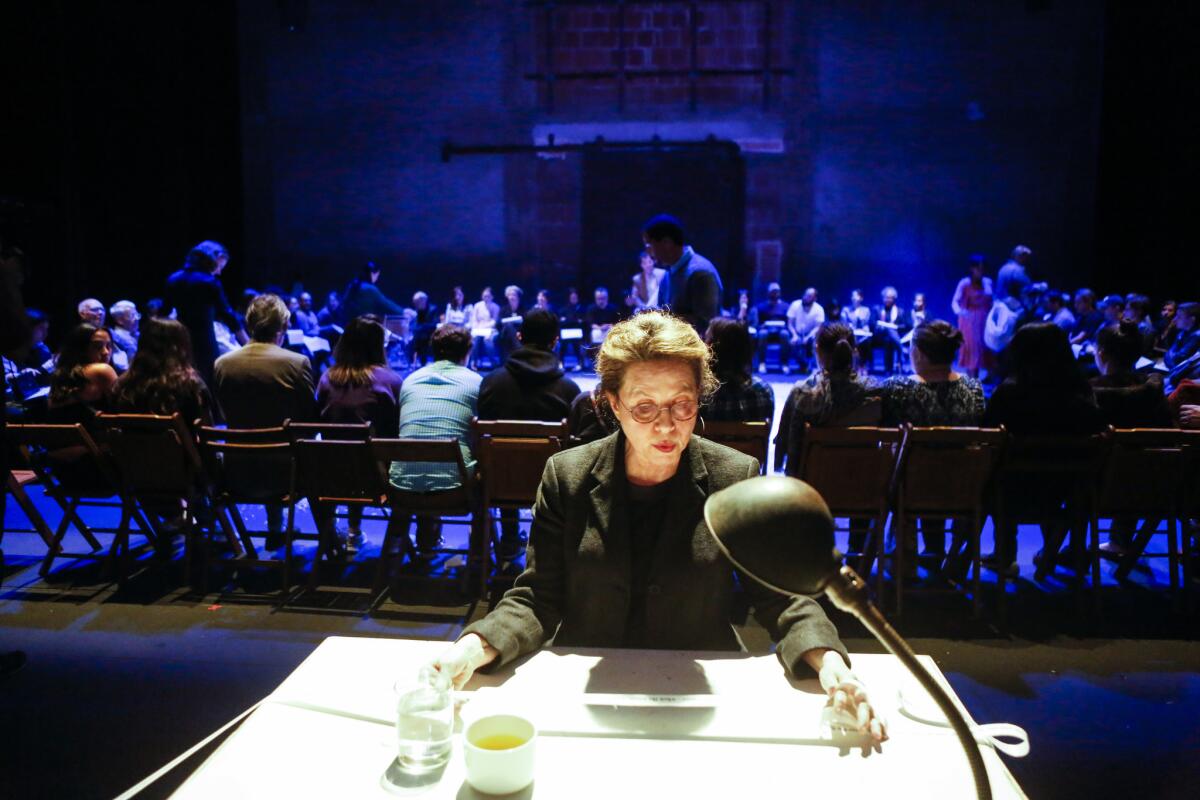
The role of the Reader at the reviewed performance was magnificently assumed by Rena Chelouche Fogel, who quite possibly has the most exquisite reading voice I’ve ever heard. (Her timbre renders the inner murmur one experiences when sitting alone with a brilliant book into something elegantly soothing.) Texts and mini-flashlights are checked out to audience members in library fashion, allowing us to follow along if we so choose.
Before attending “The Theater Is a Blank Page,” I reread “To the Lighthouse” and then, enraptured once again with Woolf’s prose, listened to the audiobook narrated by Nicole Kidman. I worried that perhaps I had done too much homework, but my preparation released me from any concern about making sense of the story, which is told here only in fragments. (I’d suggest theatergoers read a summary of the novel beforehand and then just exist in the moment-to-moment theatrical reality of the performance, free of any worry about plot, which is hardly the raison d'être of Woolf’s fictional experiment.)
“To the Lighthouse” defies dramatization. SITI Company doesn’t try to adapt the book, which is wise because Woolf’s narrative, which flits from consciousness to consciousness, is too delicate and elusive for straightforward theatrical incarnation.
The text, made physical through voice and vision, becomes part of the mise en scène. But Hamilton and SITI aren’t taking a decorative approach to “To the Lighthouse.” More ambitiously, they are translating the aesthetic space of the novel to the stage.
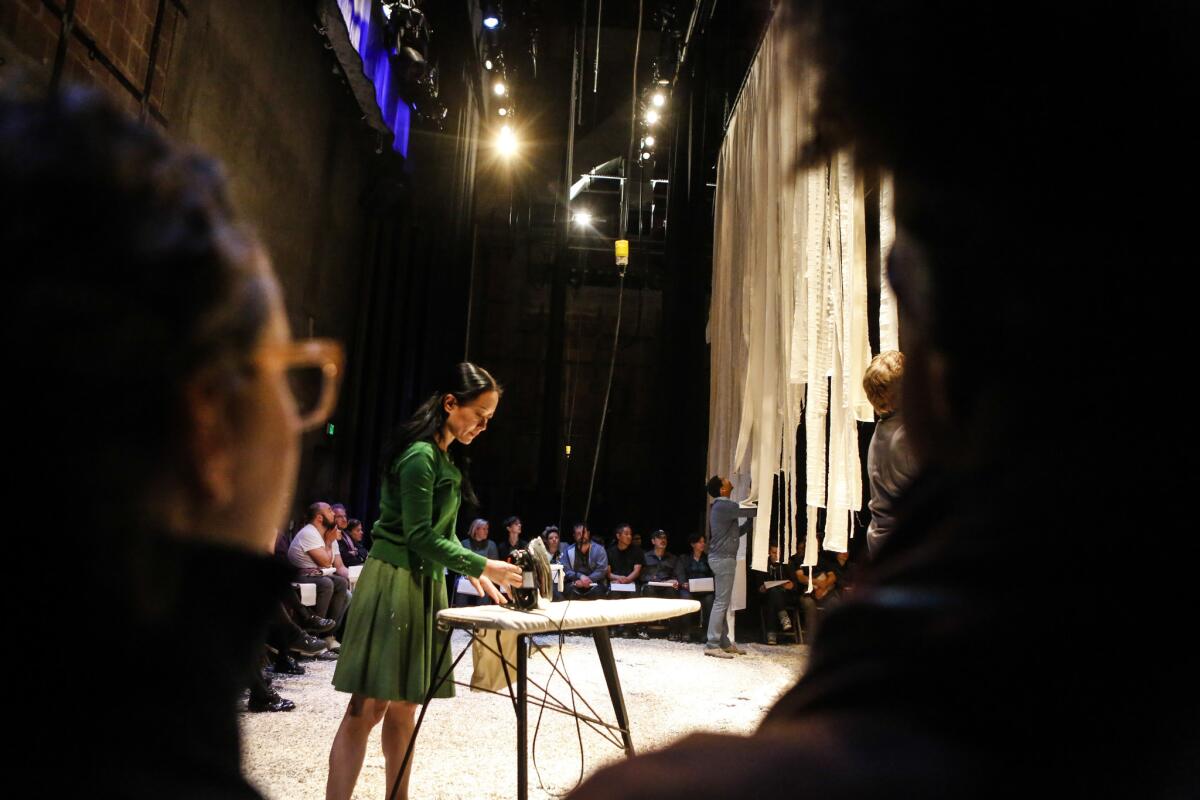
The rhythm of the production is tentative at times, especially at the outset, when the company appears hesitant to begin. The performance installation entices us by exciting our sensibilities; it doesn’t seek to dictate our experience. The staging coaxes rather than compels.
The performers operate like brushstrokes on an impressionist canvas. Ellen Lauren, wearing just the kind of shoes Mrs. Ramsay might wear marching into town to do a good deed for the poor, anchors the production with crisp female authority that turns impersonal and all-seeing in the “Time Passes” section of the novel. Akiko Aizawa, tangling herself in the matrix of white textile strips audience members help assemble after the performers iron the fabric, creates a vision of a character vanishing as the pages containing her come to a close.
But it’s the reverence for a great book that filled me with a kind of religious emotion. Reading is transformed into rituals that tantalize us with the deeper meanings of a literary masterwork while luring us to question the essence of theatrical performance, the way it joins strangers, artists and civilians alike, in a passing cloud of understanding.
♦ ♦ ♦ ♦ ♦ ♦ ♦ ♦ ♦ ♦
Ann Hamilton and SITI Company’s ‘The Theater Is a Blank Page’
Where: Royce Hall, UCLA, 340 Royce Drive, L.A.
When: 8 p.m. Tuesdays-Fridays, 2 and 8 p.m. Saturdays-Sundays; ends May 12
Tickets: $119 general admission
Information: (310) 825-2101 or cap.ucla.edu
Running time: 2 hours, 30 minutes
Follow me @charlesmcnulty
The biggest entertainment stories
Get our big stories about Hollywood, film, television, music, arts, culture and more right in your inbox as soon as they publish.
You may occasionally receive promotional content from the Los Angeles Times.








